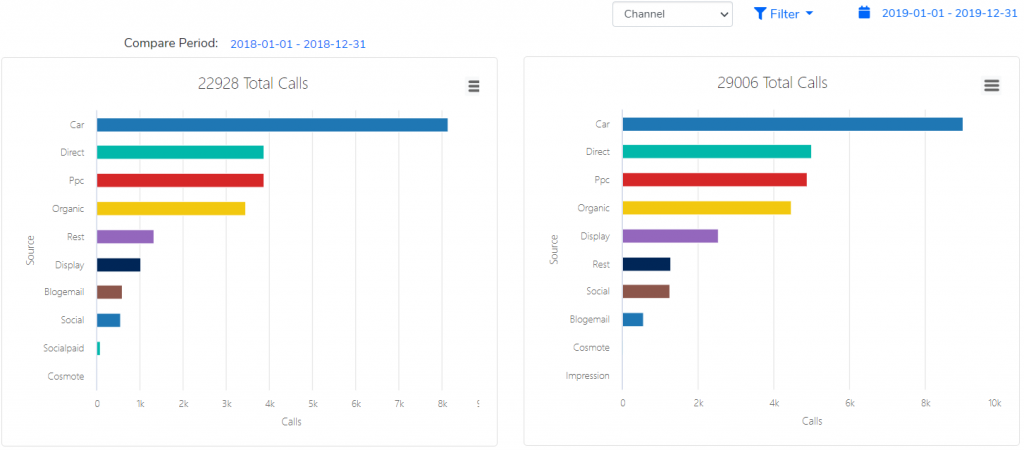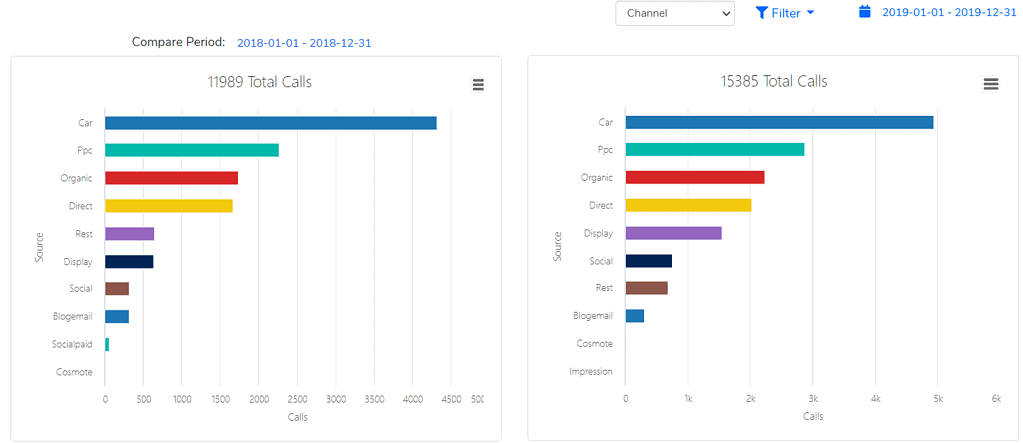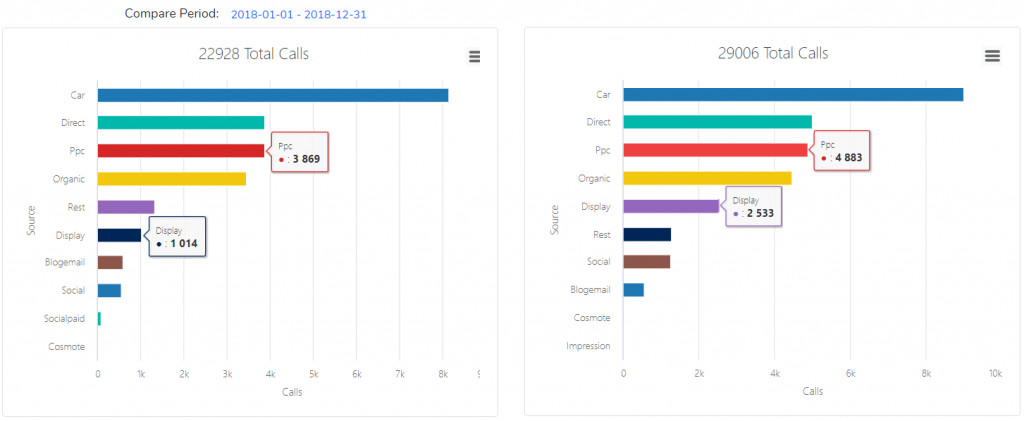Read our call tracking case study to learn how Nimbata’s cross-channel attribution helped a leading European company in the Automotive industry achieve a skyrocketing 86% increase in qualified calls!
Overview
- Industry: Automotive
- Location: Europe
- Challenge: Tracking phone leads & optimizing marketing ROI
- Solution: Nimbata Call Tracking with cross-channel attribution
- Impact: +86% in qualified phone leads | Doubled conversions from Google Ads
Our client, a leading European automotive company, had fully embraced the transition to digital marketing, with a respectable and well-constructed online presence. Despite the growth of digital channels and the subsequent focus of most businesses in the automotive industry in increasing their digital presence and marketing efforts, our client found that they receive the majority of their conversions, i.e. appointments that lead to sales, through phone calls.
This fully aligns with a study conducted by Google that confirmed phone calls account for the majority of conversions in the Automotive industry. In fact, over 50% of mobile customers in the automotive industry call the automotive businesses of their choice by tapping the phone number directly from Google’s search results.
These findings point to most automotive customers following a hybrid online/offline approach, with the majority starting their customer journeys online. Once they have shortlisted their favorites and have moved from the awareness stage to the consideration stage, they then turn to phone calls to get fast answers to their questions and to book their appointments.
The challenge
This customer behavior creates a significant blind spot for automotive companies. Phone calls matter, but measuring their impact on sales is very challenging if you don’t use the right attribution tool. Our client specifically struggled with:
1. Attributing phone leads to specific marketing channels
This is when they turned to Nimbata, seeking a trusted call tracking software to measure the number of phone leads they received, and to further understand what marketing channels were generating them. Armed with this knowledge, all they had to do now was to concert their marketing efforts to drive more calls from the marketing sources that convert to appointments and sales.
2. Discovering the third-party marketplaces that drove the most valuable traffic
Next, they had to gain a sound understanding of the 3rd party marketplaces they had available to them and what they could do for them. Once they ran some tests and discovered which ones worked best, they could now focus their efforts there to increase the number of referrals brought to the business.
3. Reducing non-sales calls to lower operational costs
Finally, the client was seeking a way to reduce non-sales calls (e.g. support questions and requests) from their marketing campaigns. Knowing the call volume of those non-qualified calls, the client could limit the operational costs by updating their website with relevant information.
The solution
How did our solution help our client overcome their business challenges? Using Nimbata’s call attribution, the client gained complete visibility into the customer journey, connecting calls to ads, keywords, and sessions.
1. Implemented a pool of local tracking numbers:
First off, since the company had at that time been advertised in more than 10 online marketing channels at a national level, they needed a pool of local tracking numbers to be assigned per source. By assigning local tracking numbers per channel, they could now track every lead source reliably all across their campaigns.
2. Dynamic Number Insertion (DNI):
By deploying Dynamic Number Insertion Technology (DNI), our client could dynamically swap tracking numbers on their website, revealing the exact channels that generate their most important phone calls.
3. Call classification and segmentation:
Nimbata’s call tracking software allowed our client to set up a filtering system for non-sales calls so they could classify their incoming leads by quality and intent and stop wasting valuable resources.
4. Deep session-level analytics:
With the above in place, the client managed to gain significant customer insights at a session level, understanding which channels, campaigns, and keywords generate high quality leads for the business.
The results
The impact Nimbata’s solution had was immediate and measurable – the company started to measure inbound calls coming from all its marketing channels, helping to steadily gain total visibility over their marketing performance. This way, they made better business decisions based on accurate marketing data, by:
- Pausing campaigns which resulted in mediocre and poor marketing results
- Allocating their budget to campaigns that brought quality leads and sales to the business
With Nimbata Call Tracking in place, the following year-on-year results from 2018 to 2019 were achieved:
* 26% rise in phone calls

* 28% rise in first-time callers (new leads)

* 86% rise in qualified calls

* 2x calls from Google Ads

The road ahead
Moving forward, in 2020, our client expanded the usage of our call tracking service to more areas of their business in the Automotive industry. More specifically, they:
- Entered the Polish automotive market for the first time, by setting up local tracking numbers to track all their inbound phone leads
- Integrated Nimbata with their CRM to attribute their revenue streams back to each inbound phone call.
- Are already planning to utilize transcriptions, one of Nimbata’s add-ons, to monitor customer phone interactions and extract significant conversational insights to improve their marketing and operations.
Inspired by their success?
If you’re facing similar challenges with phone lead tracking or campaign attribution, let’s work together to build a custom call tracking plan for your business.



